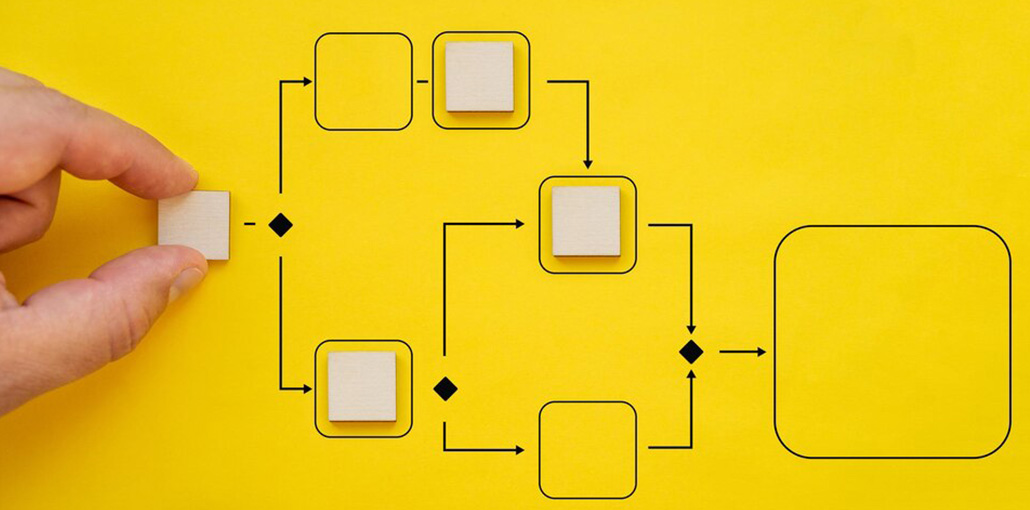In the ever-complex realm of development, the need for clear and concise tools to visualize processes is paramount. Block diagrams, with their simplicity and clarity, have emerged as indispensable tools in this context. Whether you’re mapping out a software architecture or illustrating the flow of data, using a block diagram creator can make all the difference. But what exactly are block diagrams, and why should your development teams invest in them? Let’s delve deeper.
Defining Block Diagrams
In essence, a block diagram is a type of schematic representation that employs symbols or “blocks” to depict components or functions and uses arrows to show the flow of information or the relationships between these components. Predominantly, block diagrams serve to present a high-level overview of a system without getting into the intricate operational details.
The Rationale: Why Dev Teams Should Use Block Diagrams
Streamlining Complex Concepts
Software development often involves multifaceted systems. Block diagrams simplify these complexities, ensuring that both tech-savvy and non-technical stakeholders can grasp the essence of a project.
Boosting Collaboration
By visualizing systems or processes, team members can effectively communicate ideas, spot potential flaws, and collaboratively work on solutions.
Assisting in Debugging
Errors and system flaws become more apparent when visualized. A block diagram can help in identifying areas of concern and streamlining the debugging process.
Enhancing Documentation
Good documentation is vital for the longevity and scalability of any project. Block diagrams, when incorporated into technical documents, enhance clarity and understanding. Sites like Stack Overflow often have contributors use such visual aids to explain solutions better.
Key Components of a Block Diagram
- Blocks: Represent components, functions, or modules. The nature of the block depends on what it represents—whether it’s a software function, a database, or an interface.
- Arrows: Illustrate the flow or relationship between components. An arrow’s direction can signify data flow, sequence, or even hierarchy.
- Labels: These are textual annotations providing clarity. A label might detail the type of data being transferred, function names, or other relevant information.
Also read: 3 Ways to Extend Your Software Development Team
Harnessing the Power of a Block Diagram Creator
Modern block diagram creators provide an array of features beyond the basic functionalities:
- Interactive Elements: Advanced tools allow blocks to be hyperlinked to relevant documentation, code repositories, or even interactive prototypes.
- Collaboration in Real-time: Block diagram creation platforms allow teams, regardless of geographical locations, to collaborate on a block diagram synchronously.
- Integration with Development Tools: Some advanced diagram creators seamlessly integrate with popular development platforms such as GitHub or Jira, ensuring streamlined workflows.
Expanding the Utility of Block Diagrams
While traditionally associated with electronics and systems engineering, the potential applications of block diagrams in software development are vast:
- Software Architecture: Illustrate the high-level structure of software, ensuring clarity about modules, functions, and interactions.
- Data Flow: Visualize the journey of data through various processes, from input to storage to final output.
- User Flow: For UX/UI developers, block diagrams can be invaluable in mapping out the user’s journey through a software application or website.
- Network Structures: For teams working on network designs or cloud architectures, block diagrams offer a means to illustrate server relationships, data pathways, and more.
Tips for Crafting the Perfect Block Diagram for Dev Teams
To get the most out of block diagrams, especially in a software development context, certain guidelines can further enhance their utility:
- [Start Broad, then Zoom In] Initially, provide a high-level overview that encompasses the whole system or process. As discussions progress, or as different stages of development are reached, delve into more detailed diagrams that target specific modules or functions.
- [Use Standardized Symbols] While block diagrams are often quite flexible in design, adhering to industry-standard symbols or notations can aid in universal comprehension, especially when sharing diagrams outside of your immediate team. Sites like UML.org provide resources on standardized notations.
- [Continuously Update Diagrams] As a project evolves, so should its associated diagrams. Ensuring your block diagrams remain up-to-date can be crucial in maintaining accurate communication and documentation.
- [Collaborate and Seek Feedback] Remember, a block diagram is as much a communication tool as it is a planning or documentation tool. Regularly share it with team members, stakeholders, and even end-users (if appropriate) to gain feedback and different perspectives.
- [Optimize for Various Platforms] In today’s hybrid work environment, ensure that your block diagrams are accessible and viewable on different devices—be it desktops, tablets, or even mobiles.
Also read: QA in Software Development: 5 Things You Should Know
Exploring Broader Applications
While we’ve focused on the benefits of block diagrams for dev teams, their utility isn’t limited to software and systems engineering. Other departments and industries can also benefit:
- Business Process Mapping: Operations teams can use block diagrams to map out business processes, identifying bottlenecks and areas for optimization.
- Marketing Campaign Strategies: Marketing professionals can outline the flow of multi-channel campaigns, from initial customer touchpoints through to conversion.
- Supply Chain Visualization: Logistics and supply chain professionals can use block diagrams to visualize and optimize product flow, from manufacturers to end consumers.
The Future of Block Diagrams in Development
As software development continues to grow in complexity, with an increasing emphasis on integrations, microservices, and distributed systems, the role of block diagrams will likely become even more pronounced. By bridging the gap between the technical and the abstract, these diagrams can play a pivotal role in both the planning and execution stages of a project.
In the vast and intricate world of development, the simplicity and clarity provided by block diagrams are not just beneficial—they’re essential. They facilitate streamlined communication, enhanced collaboration, and effective problem-solving. By leveraging a comprehensive block diagram creator and adhering to best practices, development teams can navigate the complexities of their projects with greater confidence and precision. Embracing block diagrams today can pave the way for more efficient and successful development endeavors in the future.










Leave a comment